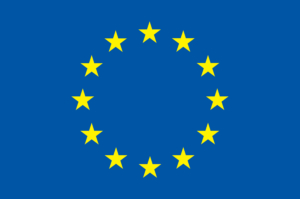Animal and robot Societies Self-organise and integrate by Social Interaction (bees and fish)
Integration of robots into honeybee and fish swarms
The main goal of the finished project ASSISIbf was to establish a robotic society that is able to develop communication channels to animal societies (honeybees & fish swarms) on its own.
The research was conducted by six European institutions from Austria, Croatia, France, Germany, Portugal and Switzerland. The project was coordinated by Univ. Prof. Thomas Schmickl
These robots will adapt by evolutionary algorithms until they have learned to interact with animals in a desired way. This new technology is aimed to lay new foundations on the way how humans can interfere with animal societies in order to manage the environment. The researchers expect their work to have impact on agriculture, live stock management and environmental protection. In parallel, the mixed societies of animals and robots will represent a novel kind of bio-hybrid ICT system, as the animals will enrich the capabilities of the machines and vice versa.
SCIENTIFIC GOALS:
1. Develop robots that can influence the collective behaviours of animals (bees and fish).
2. Establishing an adaptive and self-organising society build by robots and animals.
3. Enable the robots to autonomously „learn“ the social language of the animals.
4. Establish mixed societies that pursue a common goal which can be defined by human ,users‘ of the system.
5. Allow the robots to gain novel skills by incorporating the capabilities of the animals (sensors, cognition).
Read our article in Science Robotics here:
>>> „Robots mediating interactions between animals for interspecies collective behaviors“
Emergence of collective decision-making between honeybees and zebrafish mediated by robots
During the last decade, it has been shown that groups of robots can be socially accepted by animals and can participate in their collective decision making. It works, for example, with cockroaches, honeybees, various fish species and rats. If robots can become social companions of animals, can they go further and even enhance the collective behaviors of animals? Can robots allow the animals to do things that the animals cannot do by themselves alone? For example, can animals communicate over long distances via telecommunication systems like the Internet? Can the animals communicate and interact with species that they would never encounter in their natural ecosystem?
The members* of the European Future and Emerging Technologies (FET) project ASSISIbf have been working on the creation of ICT systems that can interface with groups of animals. In particular, two types of robots that can integrate groups of honeybees and zebrafish respectively have been designed, and the interaction and decision-making mechanisms within these groups have been studied. Physical models of collective behavior have also been created. These models are implemented on the robots to create mixed groups in which robots and animals can interact in closed loop and in a parsimonious way, demonstrating how collective decision-making can emerge through self-organisation.
These two robotic systems have allowed us to set up an experiment that is a first of its kind: a long distance interspecies collective behavior. Indeed, the study published in the journal Science Robotics shows how the two types of robots connected and sharing information through the Internet, allow the two groups of animals – zebrafish and honeybees – with different behaviors and evolving in completely different environments to interact remotely and make decisions together.
This experiment shows that self-organized systems are not limited to confined space, but that, by using current technological tools, such as robots and the Internet, we can study how complex self-organized systems can take place on a small- and/or large-scale, in greater detail than before. We can consider local scales of some particular species in their ecosystem, long distance scales through the telecom networks, or interspecies scales from water, land and air.
Here, we performed the experiments in laboratories but one can envision, in the future, being able to insert such robots within groups of animals in the wild. On the one hand, we could exploit the unrivaled perception capabilities of the living systems, their rich behavioral repertoires and their ease to move in the wild. On the other hand, we could influence their choices and add new physical properties like telecommunication and other robotic capacities. This approach could also provide a way to studying information flow in ecosystems and natural phenomena such as cascade effects among groups or species.
This approach could also be generalized to other living species, such as plants, fungi or even microorganisms, to allow systems to interact at very different scales. Some examples already exist with robots interacting with a single species, for example, with plants or yeast cells that are linked to intelligent systems running on computers or robots.
Using the framework that was developed during the FET ASSISIbf project, one can envision future capabilities in which the robotic systems would be able to learn and to adapt their behavior to animal species. We have already begun to explore these possibilities in the two separate bio-hybrid systems. We produced some preliminary results by using continuous real-time adaptation of multi-level behavioural models by evolutionary algorithms. We envision robotic systems that can, by themselves, discover new properties of bio-hybrid artificial intelligence towards building mixed living and computing devices, where robots could autonomously evolve among animals. These mixed groups could be put to work for environmental monitoring and interacting with organisms in the wild. The animals could also help robots to collectively solve problems.
Project Leader: Thomas Schmickl
Project Management: Gerald Radspieler, Martina Szopek
Team: Ronald Thenius, Martina Szopek, Martin Stefanec, Payam Zahadat, Sarah Schönwetter-Fuchs, Stefan Schönwetter-Fuchs-Schistek, Ziad Salem, Asya Ilgün, Nikolaus Sabathiel, Valerin Stokanic
Duration: 01.02.2013 to 31.07.2018
Budget: 6 Mio. Euro
Granted By: EU – 601074
Partners:
Université Paris Diderot – Paris 7
Cybertronica
University of Zagreb, Faculty of Electrical Engineering and Computing, LARICS – Laboratory for Robotics and Intelligent Control Systems
Ecole Polytechnique Fédérale de Lausanne – The Laboratoire de Systémes Robotiques
Fundação da Faculdade de Ciências da Universidade de Lisboa (FFCUL)





